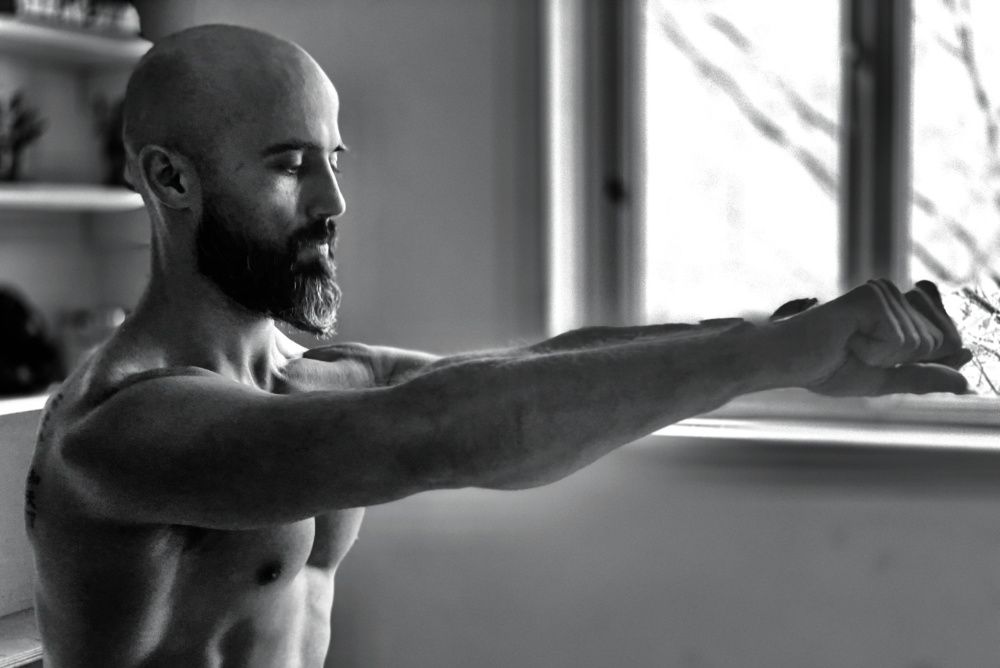
Meditations in Movement – Achieving balance in modern living
As our days get filled with longer to do lists, lunches sat at our desks and deadlines to meet, it’s hard to factor in taking more time out of the day to just sit quietly. Chasing goals in fitness is comparatively easy to justify. Measurable increases in strength and shrinking waist lines help us visualise the future fitness we want to attain. But is it even possible to quantify calmness? When was the last time you took time to improve your peace of mind?
At Shaolin Temple we study Kung Fu, Qi Gong and meditation. When I first joined the school my interest was in fitness and learning the skills of the famous warrior monks. I had little interest in the slow moving Qi Gong classes and definitely not in seated meditation. They simply didn’t peak my interest. Kung Fu practise was hard, sweaty work. Intense, dynamic movements practised in unison with 100 fellow students. We would move together as a single unit, breathing in to prepare, breathing out to move.
Explosive! Exciting! I would come out of class exhausted knowing I’d pushed my fitness to the next level. You had no choice but to breathe correctly. Breathe in at the wrong time and you would be late in your movements. Breathe out at the wrong time and the feeling of power was lost. Forget to breathe all together and you would collapse on the floor, exhausted. Breathing was everything… and so, over time, my interest crept towards the Qi Gong class and its focus on breath-work.
Unlike a Kung Fu class, Qi Gong is slow. An ancient system of movements that stimulate blood flow, strengthen the body and improve overall health. The slow movements are similar to Tai Chi which, for the purposes of this article, would be a suitable alternative. It is a practice that is accessible for both young and old. In fact, if you have ever visited South East Asia you might have noticed people gathering outside early in the mornings, all moving slowly together, welcoming the start of the new day.
Breathing in deep, breathing out slow, moving… quietly hypnotic.
Qi Gong has sets of movements to learn. Each with their own benefits for the meridians and internal health of the body. But an understanding of Chinese medicine isn’t a pre requisite… you just need a body to move, lungs to fill and a mind to settle. The very act of moving mindfully and breathing in and out at the correct times IS the meditation. It’s really that simple.
Now, I’d like you to take a deep breathe in through your nose… deeper! Did you notice your chest lift? Did you sit up a little taller? And when the breath left you did you sink back down? Now do it again, but this time try to be aware of how it makes you feel. DEEP inhale through your nose. Did you notice that tingling sensation in your skin, like goose bumps? Did it feel energising, almost heroic and on top of the world! Our breathing is so intertwined with our sense of self and wellbeing and yet most of us never take time to breathe mindfully. Breathing in fully, or inspiration, is uplifting and can have dramatic effects on our mental state. It can help us ‘grow taller’ and project ourselves out to the world around us. It can help alleviate stress and anxiety and have profound, positive effects on our social interactions.
But what about measurable benefits? Where would we like to see improvement in our lives? Let’s take a brief look at our work output and physical fitness: A reduction of stress leads to improved mental clarity and creativity. This relaxed mind will achieve a ‘flow state’ where problem solving and productivity will improve…. your output at work will go up as a result of a meditation practise; Gains in physical fitness don’t actually come in the gym…. They are the effect of the adaptation our body goes through as we recover from the load we have exerted on it. Poor recovery means less gains. If we can actively drop into that state of relaxation through our breath-work we are actively making ourselves fitter and stronger ready to take on greater strain in our next session. The knock on effects of a mindful movement practise can reach far in to many facets of our lives.
So, take a little time for yourself each day. A few minutes is all you need. Move mindfully with your breath. Relax and become a stronger and more productive version of yourself. Be present, calm and confident.

